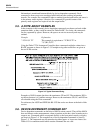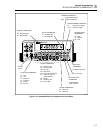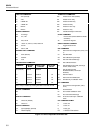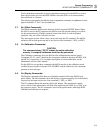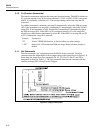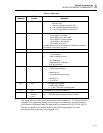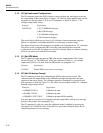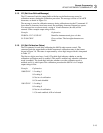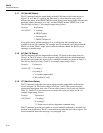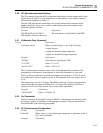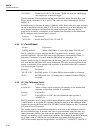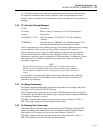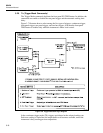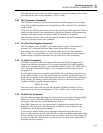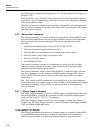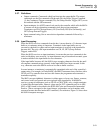
8842A
Instruction Manual
3-14
3-17. G5 (Get IAB Status)
The G5 command loads the output buffer with the IAB status in the format shown in
Figure 3-6. As Table 3-1 explains, the IAB status is a four-character string which
indicates the status of the FRONT/REAR switch (front or rear analog inputs selected), the
autorange feature (autorange on or off), and the OFFSET feature (OFFSET on or off).
The first digit is always 1. An example output string follows.
Example Explanation
1011 CR LF 1: Leading 1
0: FRONT inputs
1: Autorange off
1: OFFSET feature on
It is useful to know whether autorange is on or off because this information is not
available from the G0 command. For example, the G0 command could indicate that the
8842A was in the 200 mV range, but it would not indicate whether the 8842A was in
autorange or manual range.
3-18. G6 (Get YW Status)
The G6 command loads the output buffer with the YW status in the format shown in
Figure 3-6. The YW status is a four-character string which indicates which terminators
are selected and whether the output suffix is enabled or disabled, as shown in Table 3-1.
The first two digits are always 1 and 0. An example output string follows.
Example Explanation
1015 LF CR 1: Leading 1
0: Leading 0
1: Y1 (enable output suffix)
5: W5 (enable LF only)
3-19. G7 (Get Error Status)
The G7 command copies the error status register into the output buffer in the format
shown in Figure 3-6. The first two digits are always 1 and 0. The second two digits
represent the appropriate error code, if an error has occurred. (Error codes are listed in
Table 2-1, Section 2). If an error has not occurred, the second two digits are 00. An
example output string follows.
Example Explanation
1071 CR LF 1: Leading 1
0: Leading 0
71: Syntax error in device-dependent command string
The G7 command gives the error status as it exists when the command is executed at its
position in the input string. The G7 command does not clear the error status register. For
more information about error messages, see paragraph 3-40.



